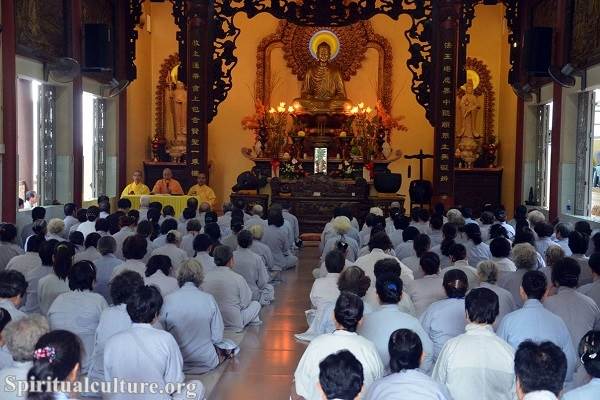Prayer has been a universal language of the soul across cultures, religions, and ages. At its heart, prayer is a dialogue—a deeply personal conversation between the finite and the infinite, a bridge connecting human hearts to divine wisdom and comfort. Many find themselves turning to prayer instinctively during life’s pivotal moments—seeking clarity amidst confusion, strength amidst adversity, and comfort amidst sorrow.
Yet, what exactly is prayer meant to accomplish? Why does humanity universally embrace this spiritual practice in diverse forms? This exploration will journey into the profound purpose of prayer, revealing its multifaceted role spiritually, culturally, and practically. By understanding prayer, we can harness its transformative potential to enrich our spiritual lives and deepen our relationship with the divine.
Prayer as Connection with the Divine
A Universal Quest for Communion
Across all spiritual traditions, prayer is fundamentally an act of reaching out—a yearning for connection with a divine power greater than oneself. Whether whispered quietly in solitude or proclaimed loudly in communal gatherings, prayer represents humanity’s intrinsic need to bond with something transcendent. This universal quest signifies our acknowledgment of dependence, humility, and desire for guidance beyond human limitations.
Personal Relationship and Intimacy
In Christianity, Jesus invites believers into a personal relationship through prayer, exemplified by the simple yet profound Lord’s Prayer:
“Our Father in heaven, hallowed be your name, your kingdom come, your will be done, on earth as it is in heaven.” (Matthew 6:9-10 NIV)
This model of prayer reflects intimacy, reverence, and submission to divine will, highlighting prayer’s role as a deeply personal conversation with God. Similarly, in Islam, Muslims engage in Salah, the five daily prayers, as structured yet intimate dialogues with Allah, reinforcing their constant awareness of His presence.
Prayer as Spiritual Transformation
Aligning the Human Heart with the Divine Will
Prayer is transformative. It is not merely a method of petitioning for desires but also a powerful practice that shapes the soul. True prayer aligns our hearts with divine intentions, transforming our inner attitudes and outer behaviors. In the Bhagavad Gita, Krishna teaches Arjuna about selfless devotion (Bhakti Yoga):
“Whoever offers Me with devotion a leaf, a flower, fruit or water—I accept that devotional offering of the pure-hearted.” (Bhagavad Gita 9.26)
This reveals prayer as a transformative devotion, encouraging purity of heart, selflessness, and alignment with divine principles.
Cultivating Inner Peace and Resilience
Prayer nurtures inner peace and emotional resilience, providing strength during trials. The Psalmist beautifully captures this aspect of prayer’s purpose:
“Even though I walk through the darkest valley, I will fear no evil, for you are with me; your rod and your staff, they comfort me.” (Psalm 23:4 NIV)
When we genuinely surrender our anxieties and burdens in prayer, we experience profound spiritual relief. Buddhist meditation, though not prayer in a traditional theistic sense, shares this purpose, encouraging mindfulness, detachment, and inner peace.
Prayer as Petition and Intercession
Seeking Help and Guidance
It is human nature to seek help in moments of distress. Prayer offers a pathway to divine support and wisdom. The Quran encourages believers to turn to Allah sincerely:
“Call upon Me; I will respond to you.” (Quran 40:60)
This divine assurance echoes across traditions—prayer is a direct line of communication for seeking assistance, wisdom, and guidance in life’s complexities.
Interceding for Others
Beyond personal needs, prayer serves a broader community purpose. Intercessory prayer—praying on behalf of others—expresses empathy, compassion, and solidarity. In Judaism, communal prayers during festivals such as Yom Kippur involve profound intercessory dimensions, emphasizing collective responsibility and community bonds. The Apostle Paul in Christianity similarly urges believers to intercede continually:
“I urge, then, first of all, that petitions, prayers, intercession and thanksgiving be made for all people.” (1 Timothy 2:1 NIV)
Prayer as Gratitude and Worship
Expressing Gratitude for Blessings
Prayer is also a celebration of gratitude—an acknowledgment of blessings received. It cultivates an attitude of appreciation, which transforms how we perceive our lives. Gratitude prayers shift our focus from scarcity to abundance, teaching us contentment. The ancient Hebrew tradition emphasizes gratitude profoundly through daily prayers such as the Modeh Ani:
“I give thanks before You, living and eternal King, for returning my soul within me in compassion. Great is Your faithfulness.”
Act of Worship and Reverence
Prayer is fundamentally worshipful—acknowledging the sovereignty, holiness, and glory of the divine. Every religious tradition incorporates prayer as a primary expression of reverence. Muslims’ daily prostrations during Salah visibly demonstrate humility and worship toward Allah, just as Hindu chanting of sacred mantras reverently acknowledges divine power and cosmic order.
Prayer as Reflective Meditation
Quieting the Mind and Heart
Prayer as contemplative practice helps quiet the noise of everyday life, facilitating deeper reflection. This aspect of prayer allows practitioners to find clarity, direction, and profound insight. In Christianity, contemplative prayer traditions, such as practiced by mystics like St. Teresa of Ávila and Thomas Merton, emphasize silence as essential in encountering the divine presence.
Enhancing Self-awareness
Through prayerful reflection, we gain deeper insight into our inner selves, motivations, and actions. This heightened self-awareness facilitates personal growth and spiritual maturity. Zen Buddhist meditation exemplifies this reflective dimension—though non-theistic, it parallels the meditative introspection found in prayer, revealing universal human longing for inner clarity.
Cultural and Community Functions of Prayer
Unifying Communities
Prayer also possesses profound cultural significance, shaping community identity and unity. Religious festivals, communal prayer gatherings, and rituals cultivate strong social bonds, reinforcing shared values and collective identity. For example, the Jewish Shabbat prayers, Catholic Mass, or Islamic Friday congregational prayers (Jumu’ah) serve not only spiritual but communal purposes, unifying individuals through shared devotion.
Preserving Cultural Heritage
Through rituals, liturgies, and prayerful chants, traditions pass spiritual wisdom and cultural heritage from generation to generation. Prayer thus becomes a living vessel of cultural memory, keeping communities connected to their historical roots, ethical frameworks, and spiritual insights.
Reflect and Reimagine
Prayer’s purpose is beautifully multi-dimensional: it connects us intimately with the divine, transforms our inner beings, provides guidance, cultivates gratitude, fosters community unity, and enhances reflective clarity. Whether you pray with words, in silence, through chants, or communal gatherings, the core remains unchanged—prayer is the sacred dialogue between the human and the divine, an encounter that renews, restores, and inspires.
As you reflect on your prayer life, ask yourself:
- How does prayer currently shape your spiritual journey?
- Are you embracing prayer’s transformative power?
- How might deepening your practice of prayer enrich your spiritual and daily life?
Let prayer become more than ritual—let it be your sanctuary, your anchor, and your bridge to the divine. In every prayerful moment lies the possibility of encountering profound truth, unconditional love, and spiritual renewal. Open your heart, lift your voice, or quiet your mind—and let your soul discover its purpose anew.


